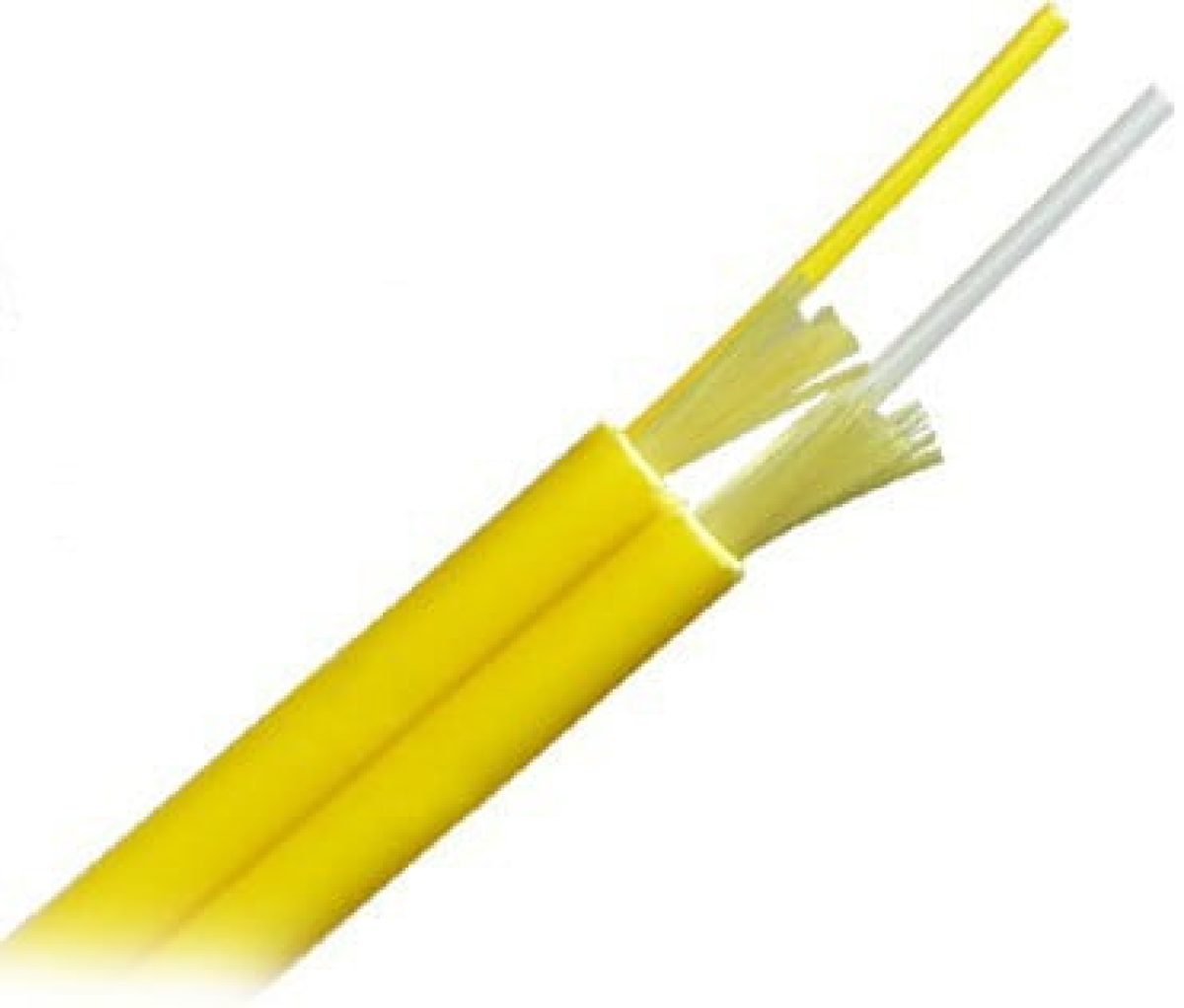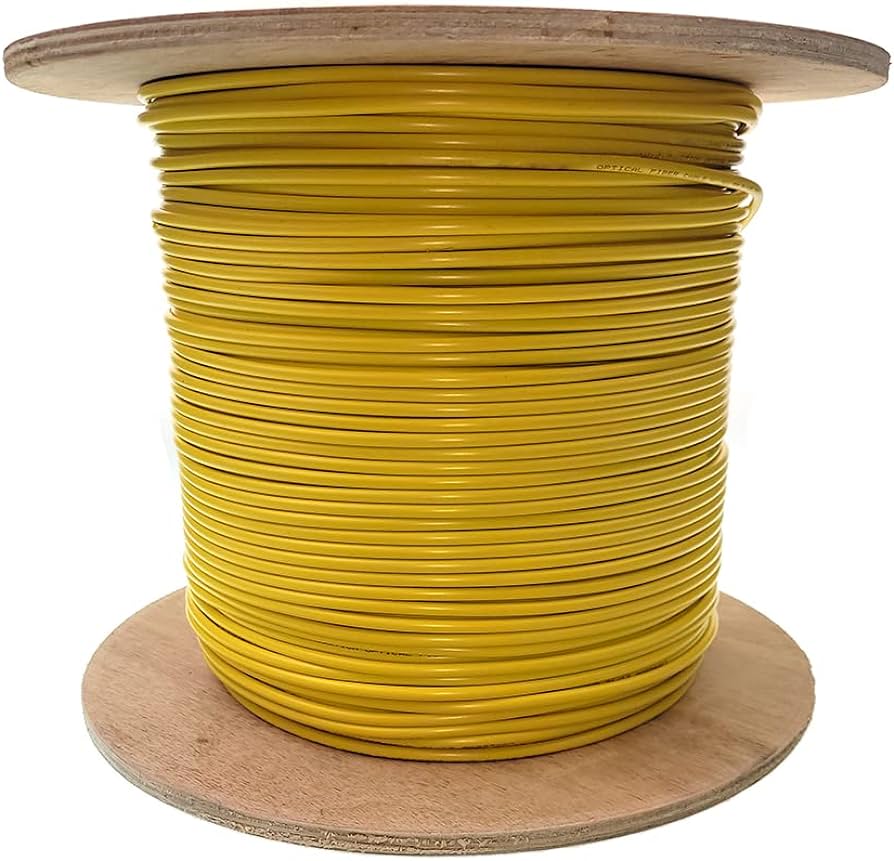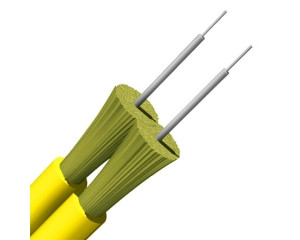Understanding the Applications of Zipcord Cable in Fiber Optic Networks

Exploring Zipcord Cable in Fiber Optic Networks
Understanding Zipcord Cable
Zipcord cable, also known as zip cord, plays a pivotal role in fiber optic networks due to its diverse applications and advantages in singlemode, 2-fiber configurations. This type of fiber optic cable is designed for efficiency and reliability, optimizing network setups for seamless connectivity. Understanding the construction and benefits of zipcord cable is essential for maximizing its potential in fiber optic networks.
Understanding Zipcord Cable
What is Zipcord Cable?
Zipcord cable is constructed with two parallel fiber optic cables held together by a thin web. This design allows for easy separation of the individual cables when needed, providing flexibility and convenience during installation and maintenance. The primary use of zipcord cable in fiber optic networks is for short indoor runs, such as within data centers or between communication rooms.
Advantages of Zipcord Cable
Durability and Flexibility: Zipcord cable is known for its robust construction, ensuring durability while maintaining flexibility. This makes it suitable for various installation environments and helps prevent damage during handling and routing.
Simplified Installation and Maintenance: The design of zipcord cable simplifies the installation process, reducing the time and effort required. Additionally, its easy separation feature facilitates efficient maintenance and troubleshooting tasks.
Applications in Fiber Optic Networks
Singlemode Fiber Optic Networks
In singlemode fiber optic networks, zipcord cable serves as a reliable solution for connecting various components within the network. Its use in singlemode setups ensures seamless connectivity over long distances, making it ideal for telecommunication and data transmission applications. The enhanced performance of zipcord cable in singlemode fiber optic networks is attributed to its ability to minimize signal loss and maintain signal integrity, thereby optimizing the overall network efficiency.

Multi-fiber Configurations
When comparing the applications of zipcord cable in multi-fiber networks, it becomes evident that its versatility extends to accommodating multiple connections within a single cable structure. However, the benefits of using singlemode cables over multi-fiber options lie in their ability to transmit signals over longer distances with minimal interference and attenuation. This makes them particularly suitable for long-haul communication systems and high-capacity data transmission requirements.
By utilizing zipcord cable in both singlemode and multi-fiber configurations, fiber optic networks can effectively cater to diverse connectivity needs while ensuring optimal performance and reliability.
Singlemode vs. Multi-fiber
Advantages of Singlemode Cables
Singlemode cables offer significant advantages in optimizing fiber optic networks, particularly in long-distance communication and high-speed data transmission. The efficiency of singlemode cables lies in their ability to carry signals over extended distances with minimal signal loss, making them ideal for telecommunication and internet service provider (ISP) networks. Their reliability stems from the reduced dispersion of light signals, ensuring consistent and stable connectivity for critical applications. By utilizing singlemode cables, fiber optic networks can achieve enhanced performance and seamless transmission of data, meeting the demands of modern connectivity requirements.
Benefits of Multi-fiber Configurations
The deployment of multi-fiber configurations provides versatility and scalability in accommodating a large number of connections within a single network setup. Multi-fiber setups are suitable for scenarios where multiple connections need to be established between different network components or devices. When considering implementing multi-fiber configurations, factors such as future expansion needs, spatial constraints, and overall network complexity should be carefully evaluated to ensure seamless integration and efficient utilization of the available resources.
Embracing the advantages of both singlemode cables and multi-fiber configurations allows fiber optic networks to cater to diverse connectivity requirements while maintaining optimal performance and reliability.
Optimizing Network Setups
Efficiency in Fiber Optic Networks
Efficiency in fiber optic networks plays a crucial role in ensuring seamless connectivity and data transmission. When it comes to network optimization, zipcord cable offers several strategies for enhancing overall efficiency. By utilizing zipcord cable with its easy separation feature, network setups can be streamlined, allowing for swift deployment and reconfiguration as per the evolving connectivity needs. The use of zipcord cable also contributes to minimizing signal loss and maintaining optimal performance, thereby enhancing the overall efficiency of fiber optic networks.
Moreover, the role of zipcord cable in enhancing network performance is evident through its ability to facilitate quick and efficient installation, reducing downtime and operational disruptions. Its durable construction ensures long-term reliability, further contributing to the sustained efficiency of fiber optic networks.
Reliability and Maintenance
Ensuring network reliability through effective cable management is essential for maintaining seamless connectivity. Proper organization and labeling of zipcord cable enable efficient troubleshooting and maintenance tasks, minimizing downtime caused by connectivity issues. Best practices for maintaining zipcord cable in fiber optic networks include regular inspections for any signs of wear or damage, prompt repairs or replacements when necessary, and adherence to industry standards for handling and routing.
By implementing these best practices, network reliability can be upheld, ensuring uninterrupted data transmission and connectivity within fiber optic networks.

The Role of Zipcord Cable in Modern Connectivity
Significance of Zipcord Cable in Modern Networks
In modern fiber optic networks, the role of zipcord cable is significant, offering versatile connectivity solutions for various applications. Its design and durability make it a preferred choice for network setups requiring efficient and reliable fiber optic cable solutions. Understanding the diverse network applications of zipcord cable is crucial for leveraging its potential in optimizing modern connectivity requirements.
How Zipcord Cable Contributes to Efficient and Reliable Connectivity
Zipcord cable contributes to efficient and reliable connectivity by providing a robust and flexible solution for establishing seamless connections within fiber optic networks. Its durable construction and ease of installation make it an essential component in ensuring reliable data transmission and network performance.
The Importance of Understanding and Leveraging Zipcord Cable Applications
Understanding and leveraging the applications of zipcord cable are essential for maximizing its potential in modern connectivity setups. By recognizing its advantages and versatility, network operators can effectively optimize their infrastructure to meet the demands of evolving connectivity requirements while ensuring efficient and reliable data transmission.
See Also
Choosing the Right Quick Assembly Connector: Tips and Advice
Key Considerations for Choosing Field Pre-installable Connectors
Hybrid Fiber Connectors: Exploring Optic Patch Cable Solutions
Building Reliable Network Infrastructure with Fiber Patch Cords
Understanding ABS Module: A Key Component for FTTH Applications
About US
Follow Us
AnetFiber company's main products are indoor and outdoor optical fiber cables, outdoor waterproof pre-connected fiber-to-the-home products, PLC optical fiber splitters, optical fiber jumpers and pigtails, MTP®/MPO high-density big data product solutions, optical fiber field quick connectors and research and development molding, injection molding and production of optical fiber distribution boxes, optical fiber chassis cabinets, the market has expanded to the world, Europe, America, Asia, the Middle East and Latin America.
Address
Shenzhen City, Baoan District, Yanluo Street, Tangxiayong Community, Yangyong Industrial Road, Tonggangda New Energy Vehicle Park 406
Contacts
+86 199 2655 3586

